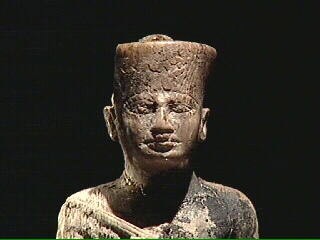
Khufu (Cheops) biography
Date of birth : -
Date of death : -
Birthplace : Egypt
Nationality : Egyptian
Category : Historian personalities
Last modified : 2011-09-05
Credited as : King, Great Pyramid at Giza, Forth Dynasty
Khufu (reigned 2590-2568 B.C.), or Cheops, was an Egyptian king who built the Great Pyramid at Giza and ruled as the second king of the Fourth Dynasty.
The son and immediate successor of Queen Hetepheres and King Snefru, the founder of the Fourth Dynasty (ca. 2613-2494 B.C.), Khufu is perhaps better known by his Greek name, Cheops. His Great Pyramid at Giza marks the climax in pyramid building in respect to both size and quality of construction. No monument in Egypt has been surveyed and measured so often and so carefully. Its base covers an area of 13.1 acres, and a survey undertaken in 1925 showed that the difference between the longest and shortest sides was only 7.9 inches. When complete, it rose to a height of 481.4 feet, the top 31 feet of which are now missing.
It has been estimated that the core of local stone and the outer facing of the completed pyramid were composed of about 2,300,000 separate blocks, each averaging about 2 1/2 tons. The outer facing was originally of Tura limestone, but with the exception of a few pieces at the base, all this has been stripped off the sides. The capstone, which was possibly of granite, has also been removed.
The original entrance was in the north face at a height of about 55 feet measured vertically above ground level. According to a Moslem tradition, a large opening a little below it was made during the 9th century A.D. at the command of the caliph al-Mamun, who mistakenly believed that the pyramid contained hidden treasure.
The internal arrangements show two changes of plan, the latter of which involved the construction of the famous Grand Gallery, which slopes upward to the burial place, now known as the King's Chamber. Adjoining the east face of the pyramid was the Mortuary Temple.
Little is known of the events of this King's reign, but some indication of the extent of Egypt's power and influence at this time is afforded by the occurrence of his name on monuments ranging from Nubia to Sinai and even farther afield. A stele bearing his name was found in the diorite quarries northwest of Toshka in the Nubian Desert, and a relief at Wadi Maghara in Sinai depicts him smiting the local Bedouin.


















